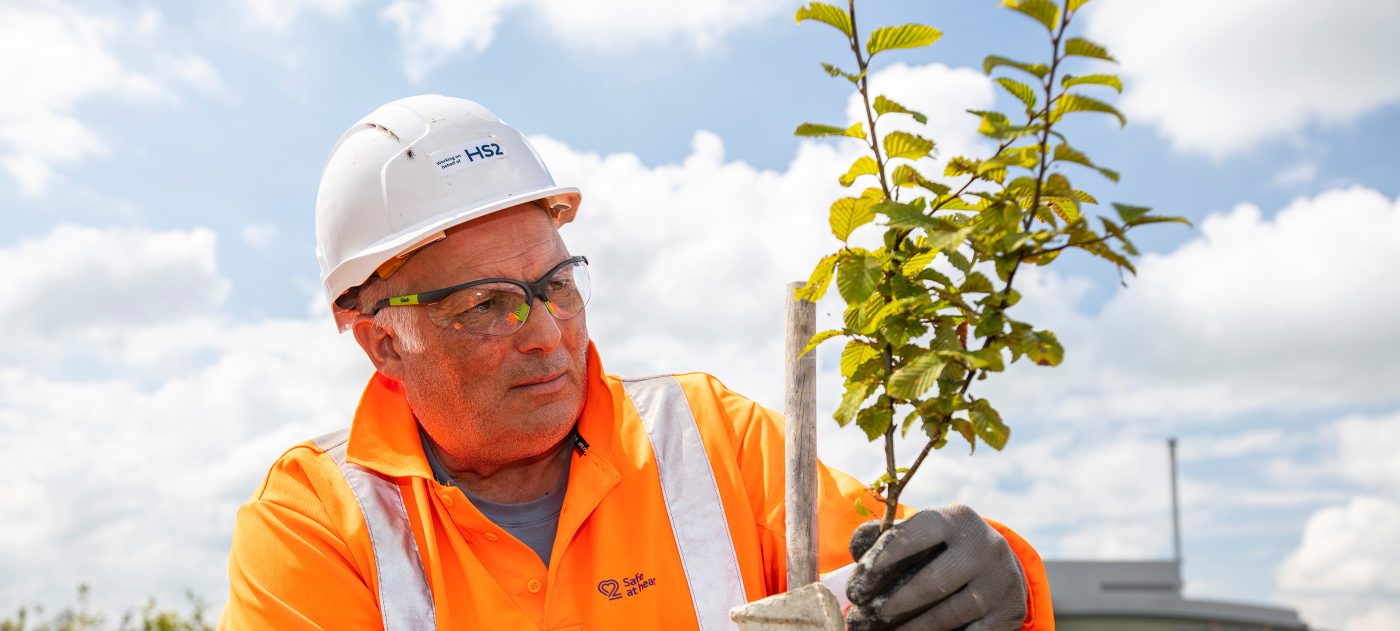
Ancient woodland
In line with conservation bodies, we recognise the importance of ancient woodlands and have designed the railway to avoid these habitats wherever possible. While there will be some impacts to the countryside as we build Britain’s new zero carbon, high-speed railway, we’re doing everything we can to conserve as much existing wildlife and habitats as possible.
Reducing our impact on ancient woodlands is one of our highest priorities. Over half of the route between the West Midlands and London will travel underground in tunnels or be lowered into the landscape through cuttings to help us avoid precious woodlands and integrate HS2 into its surroundings.
Through ongoing design refinements between the West Midlands and London, we have already reduced impacts to ancient woodlands by approximately 30% compared to our original forecasts.
Ancient Woodland Online Map
You can track the development of our work on ancient woodlands using our online mapping tool below.
This tool will be updated annually to show:
- Impacts to ancient woodlands to date;
- Measures we have already implemented to reduce and compensate for impacts to ancient woodlands; and
- The locations of new woodland creation and ancient woodland restoration schemes funded through the HS2 funds.
How to use the map
Clicking on each ancient woodland will provide further details. A list of all the ancient woodlands can be found on the right-hand side of the map. You can select a name to take you directly to that woodland. You can also filter the information by county to see the detail at a local scale.
The HS2 Woodland Fund data includes most of the schemes funded through the Woodland Fund. Projects yet to be consented or completed through the Woodland Fund do not appear on the mapping tool. Additionally, some consented or completed Woodland Fund projects are included in our reporting but not present on this mapping tool, due to owner’s privacy requests.
Reducing our impact
Ancient woodlands are areas that have been continuously wooded since at least 1600AD, and have developed complex, irreplaceable ecosystems over hundreds of years.
There are over 52,000 ancient woodland sites in England. Our original assessments forecasted that parts of 32 ancient woodlands would be impacted the route. As a result of our continuing design refinements, we have removed impacts to seven of these ancient woodlands, reducing the total number to 25. Of these 25 woodlands, 85% of the total area will remain untouched by HS2.
This means that for Phase One of the route, 0.0005% of the country’s ancient woodland will be lost – and we are actively working to reduce this impact further.
Download our HS2 Ancient Woodland reports published on GOV.UK
HS2 Woodland Fund
In addition to our core compensation measures for woodlands, we also provide funds to help restore existing ancient woodlands and to create new native woodlands that connect or extend existing woodlands along the route. These funds are available for schemes within 25 miles of the railway.
To date, the fund for Phase One has already created over 175 hectares of new woodland and restored over 70 hectares of existing ancient woodlands, amounting to over 420,000 new trees planted.